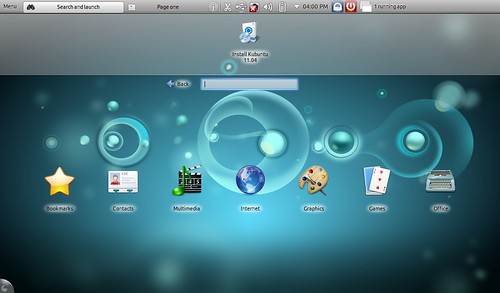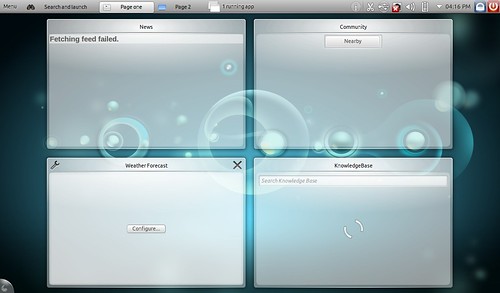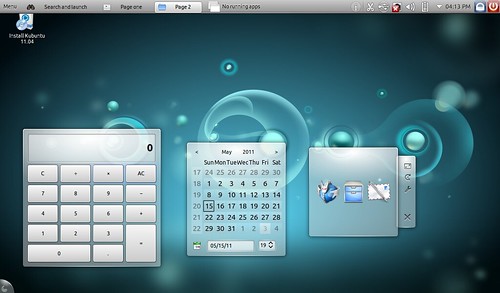May be I should stop live-testing distribution to start doing something more useful, but as my netbook remix (10.04) installation is getting older I'm looking for a proper replacement of the user interface I'm most addicted. So I couldn't resist not to load an SD card with the latest Kubuntu (KDE based Ubuntu version) release to give it a test on the EEEPC 900. I downloaded so Kubuntu disk image and prepared a bootable SD, as usual, with Ubuntu bootable disk creation tool.
First impressions
After boot Kubuntu starts with its “Plasma” interface and welcomes you with the application browser, here called “Search and launch”.
KDE application browser isn't very different from Unity or Gnome 3 application browser concept, except the horizontal layout and the fact that it doesn't reset every time you launch an application. In the upper part there is an area reserved for your preferred programs.
In addition to the application browser there is the so called “page one” containing some “social” applets (they are all empty since I was off-line).
Pages in KDE can be easily configured, you can add a page and place in it the applets you need.
Conclusions
It was about one year ago when I first saw KDE Plasma interface on Kubuntu, and it left me a little disoriented. Now, after having seen Unity and Gnome 3, I felt more comfortable in using it. Basic concepts lying behind these new interfaces are all very similar, no matters if you develop them vertically or horizontally. What really makes the difference with KDE is flexibility: the default configuration offers a simple and easy to use interface but if you don't like it you can add pages and applets until you have one that fits your needs. Last but not least KDE performed well enough on my EEEPC 900. it seemed to me more responsive than one year ago. (but it's only a very subjective impression) I suppose it could perform even better if it's possible to disable some some nice but non vital graphic effect.






No comments :
Post a Comment